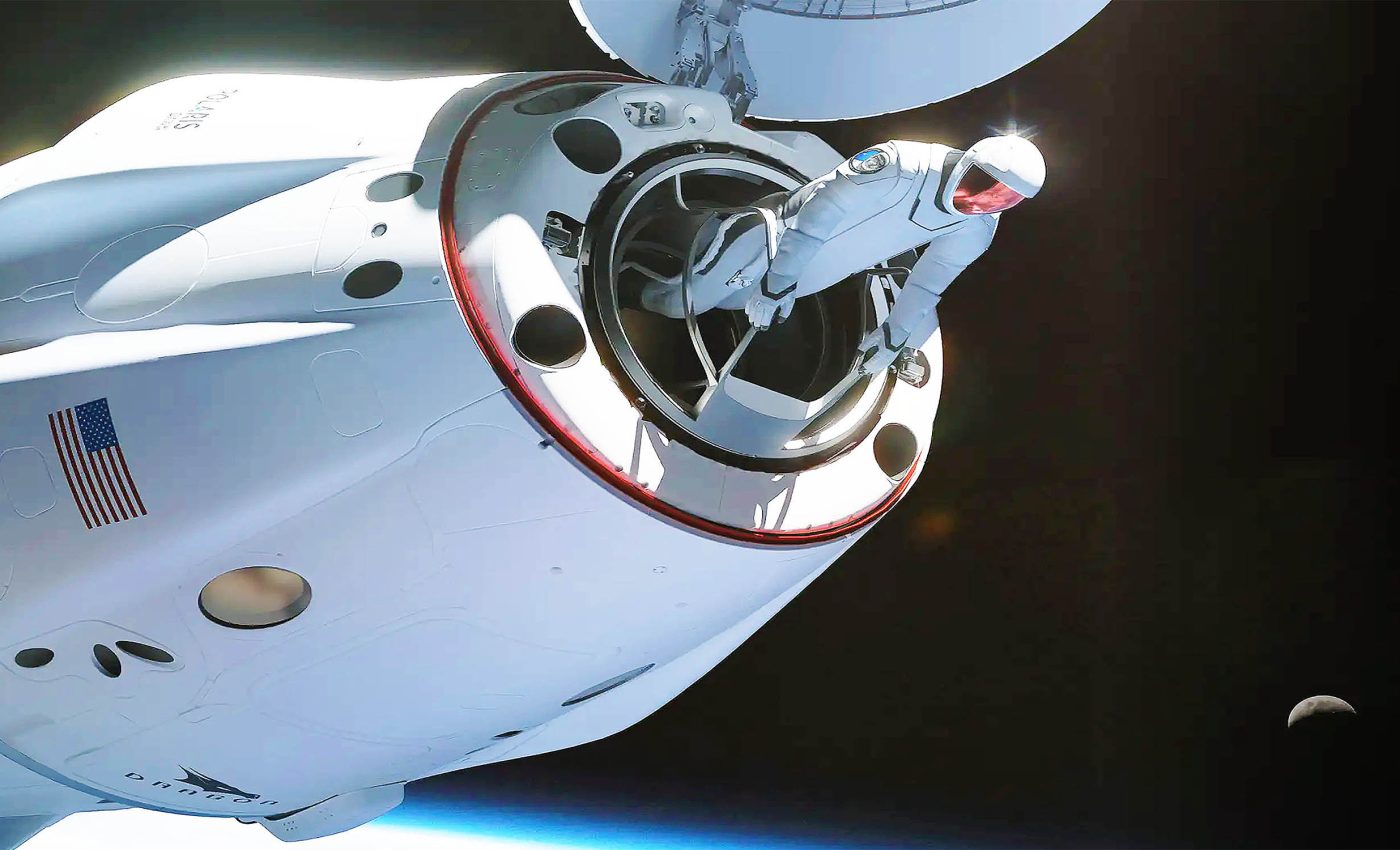
Polaris Dawn: Four civilians embarking on a dangerous spacewalking mission
What is it about space that enthralls billionaire Jared Isaacman, the civilian astronaut who will be leading, funding, and spacewalking in the upcoming Polaris Dawn mission? In 2021, Isaacman, founder of payment services giant Shift4, funded a mission that orbited Earth.
Known as Inspiration4, it raised funds for childhood cancer while also headlining as a journey undertaken by four space neophytes.
After spending three days in a 13-foot-wide SpaceX Crew Dragon capsule, the crew returned home, having accomplished a feat many thought was the pinnacle of Isaacman’s space ambitions.
“We kind of checked every one of the boxes we set out to achieve,” Isaacman mused after the journey. But space, with its magnetic allure, has been calling Isaacman back.
Chapter 2: Polaris Dawn
August 26 will find Isaacman standing on the precipice of a new adventure at Kennedy Space Center in Florida, accompanied by three colleagues that were not part of his Inspiration4 mission.
Scott “Kidd” Poteet, a former Air Force pilot, SpaceX engineers Anna Menon and Sarah Gillis will join him in a venture that aims to push the envelope of human achievement in space.
This new mission, named Polaris Dawn, promises more than just a repetition of past achievements.
Polaris Dawn is no ordinary space mission
Polaris Dawn is extraordinary because it’s not merely a pleasure ride for the rich and adventurous… it’s an actual space research mission.
Former NASA astronaut and current SpaceX consultant, Garrett Reisman explained to CNN that, “Jared (wants) to do things that SpaceX wasn’t necessarily doing on its own, to increase their capabilities, to get them to move the ball further downfield.”

As part of this mission, the Polaris Dawn crew will spend five days aboard a SpaceX Crew Dragon capsule, flying to heights untouched since NASA’s Apollo missions ended in the 1970s.
One of the distinguishing aspects of this mission is its daring trajectory. The capsule’s path will take the crew through the Van Allen radiation belts.
This area is populated with high-energy particles that could be a significant risk to both the craft and astronauts. But Isaacman and his team are willing to take the risk, as it’s necessary to validate future space travel technologies.
World’s first private spacewalk
Perhaps the most audacious undertaking of Polaris Dawn is the planned spacewalk. For the first time, non-government astronauts will exit a spacecraft and venture into space’s vacuum.
This daring feat will depend on new Extra-Vehicular Activity (EVA) suits designed by SpaceX over two and a half years. Only Isaacman and Sarah Gillis will leave the spacecraft, strapped by umbilical cords.
This spacewalk is a significant leap in private space exploration and demonstrates the potential contributions of civilian missions to space technology development.
Navigating the complexities
Space exploration has its challenges, and Polaris Dawn is no exception. Preparing for the spacewalk is vital.
Since there’s no airlock to facilitate this transition, the Polaris Dawn crew will use an innovative method: gradually decreasing cabin pressure while augmenting oxygen concentration. This meticulous process will take roughly 45 hours — nearly two full days.
Once out there, they will embark on an elliptical orbit that will take them as far as 870 miles (1,400 kilometers) from Earth, journeying into the inner band of the Van Allen radiation belts.
To prepare for these risky conditions, SpaceX has subjected the Crew Dragon spacecraft to extensive testing, including exposure to radiation in an oncology lab to mimic the mission’s conditions.
Polaris Dawn is the first in a series
Despite the risks, the crew remains undeterred. Isaacman’s enthusiasm for space exploration is driven partly by his belief in SpaceX’s broader mission to make humanity a multiplanetary species, a vision shared by CEO Elon Musk.
Polaris Dawn is just the first in a series of test and development missions under the Polaris Program.
As Garrett Reisman told CNN, “Going faster is not necessarily more risky. Taking large risks in testing when the consequences of failure are low results in reduced risk later when the consequences of failure are high.”
Anticipating challenges, embracing possibilities
The Polaris Dawn crew’s blend of technical expertise and relentless determination represents the spirit of exploration.
They are not just pushing the limits of technology but also advancing humanity’s understanding of what’s possible in space.
So, are you ready to join us on this remarkable journey as we watch these brave men and women venture where no one has dared before?
As they look towards the heavens with dreams in their eyes, and courage in their hearts, we are reminded that the sky is not the limit — it’s just the beginning!
You can view the Polaris Dawn photostream here…
—–
Like what you read? Subscribe to our newsletter for engaging articles, exclusive content, and the latest updates.
Check us out on EarthSnap, a free app brought to you by Eric Ralls and Earth.com.
—–














